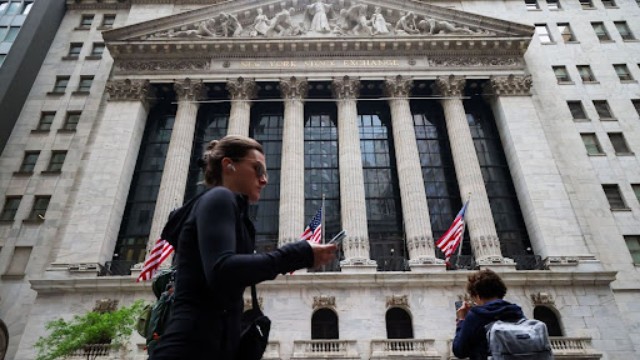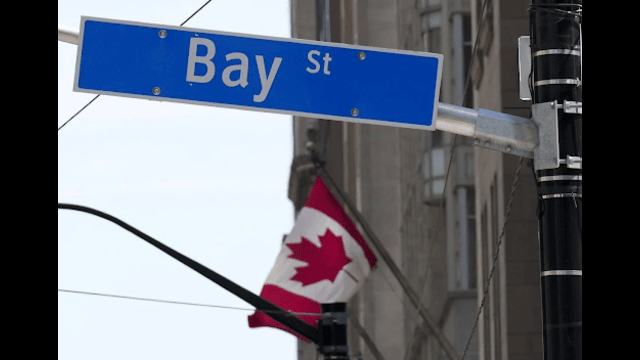
People are seen sitting outside the TMX Market Centre in downtown Toronto on Wednesday, September 11, 2024. Photo credit: THE CANADIAN PRESS/Paige Taylor White
Canada’s main stock index suffered its steepest fall in nearly six weeks on Wednesday, dragged down by mounting concerns over the U.S. government's growing debt. This decline echoed a deeper dip in American markets, which were shaken by surging Treasury yields and nervous investor sentiment.
The S&P/TSX composite index dropped by 216.46 points, closing at 25,839.17. It marked the largest single-day loss for the index since April 10. South of the border, the damage was even more severe. The Dow Jones Industrial Average sank 816.80 points to 41,860.44. Meanwhile, the S&P 500 lost 95.85 points, settling at 5,844.61, and the Nasdaq slipped 270.07 points to close at 18,872.64.
Earlier in the day, markets showed minor losses, influenced by mixed earnings reports from major retailers like Target. However, sentiment shifted sharply downward following the U.S. government's latest bond auction. To attract investors for its 20-year Treasury bonds, the government offered a yield that crossed 5% — a rare move that unsettled financial markets.
This high yield reflects the government’s growing need to borrow. With a $16 billion loan on offer, it had to sweeten the deal to attract buyers, signalling that future borrowing could come with even steeper costs.
Mike Archibald, a portfolio manager at AGF Investments in Toronto, pointed out that the market is growing anxious over persistent U.S. budget deficits. He explained that higher borrowing costs mean the government will have to issue even more bonds, creating a ripple effect. As the U.S. pays more to borrow, banks and lenders could raise interest rates on mortgages, car loans, and credit cards, putting pressure on everyday consumers and potentially slowing down the economy.
Rising yields also reduce the appeal of stock investments, as safer assets like government bonds become more attractive. Adding to the worries, Washington is currently debating new tax cuts — a move that could add trillions to the already ballooning U.S. debt. This uncertainty has also been amplified by concerns about rising inflation driven by tariffs and international trade policies.
Despite the widespread losses, a few sectors on the TSX managed to stay afloat. Defensive areas like materials (mainly mining), energy, utilities, and consumer staples saw gains. Gold stocks, in particular, performed well for the second day in a row as investors turned to safer assets amid the turmoil.
Archibald noted that while the market has had a strong rally in recent weeks, some pullback is natural and even healthy. He also pointed out that concerns around extreme tariff impacts seem to be fading, which could help stabilize markets going forward.
On the economic front, investors are eyeing upcoming earnings reports from Canadian banks, with TD Bank kicking things off Thursday. These results are expected to offer deeper insights into Canada’s economy and consumer confidence.
Elsewhere, the Canadian dollar climbed to 72.21 cents US, up from 71.76 cents on Tuesday. Oil prices dipped slightly, with July crude down 46 cents to US$61.57 a barrel. Natural gas also slipped, while gold and copper prices rose — signalling continued investor caution.















